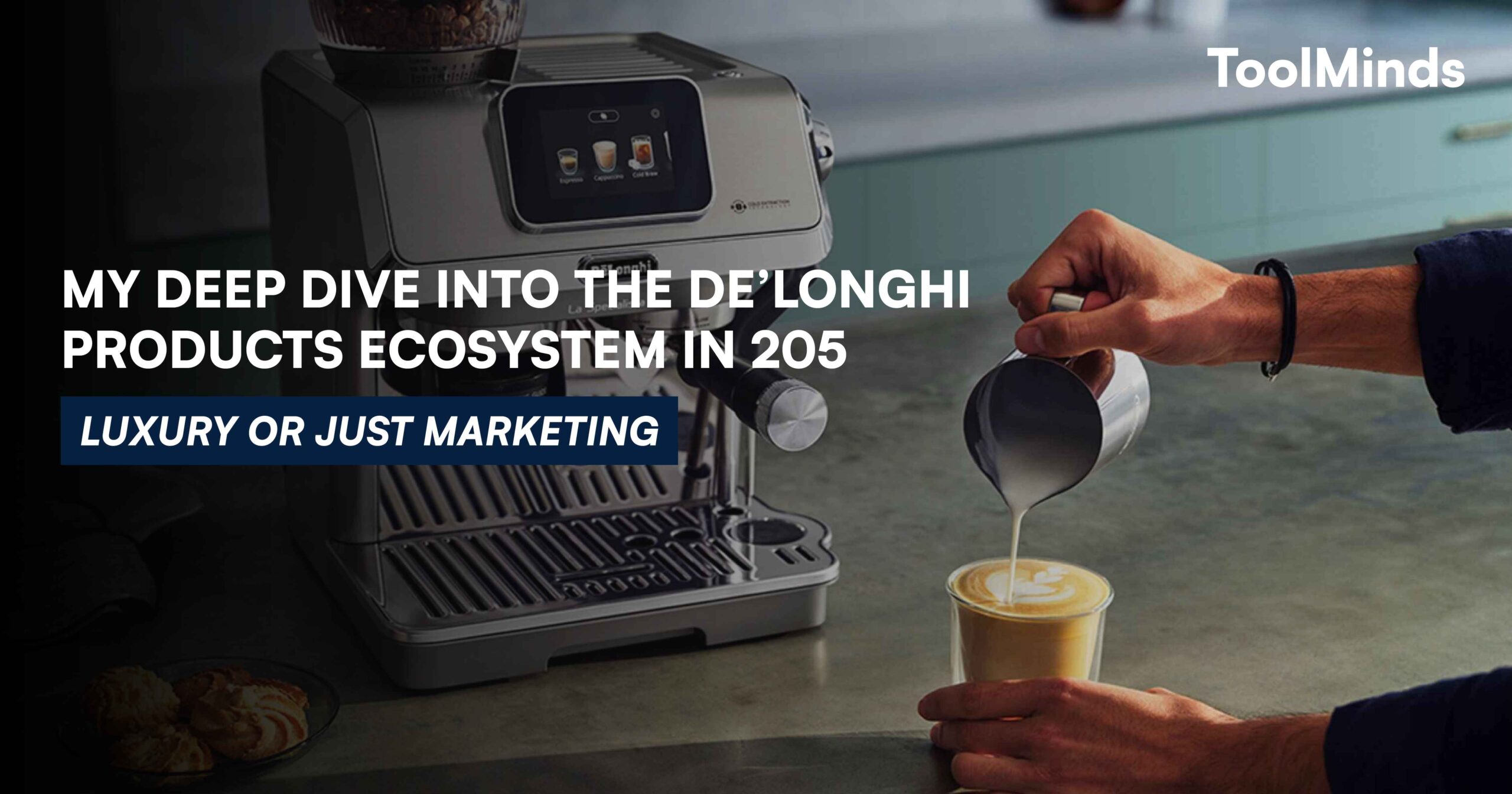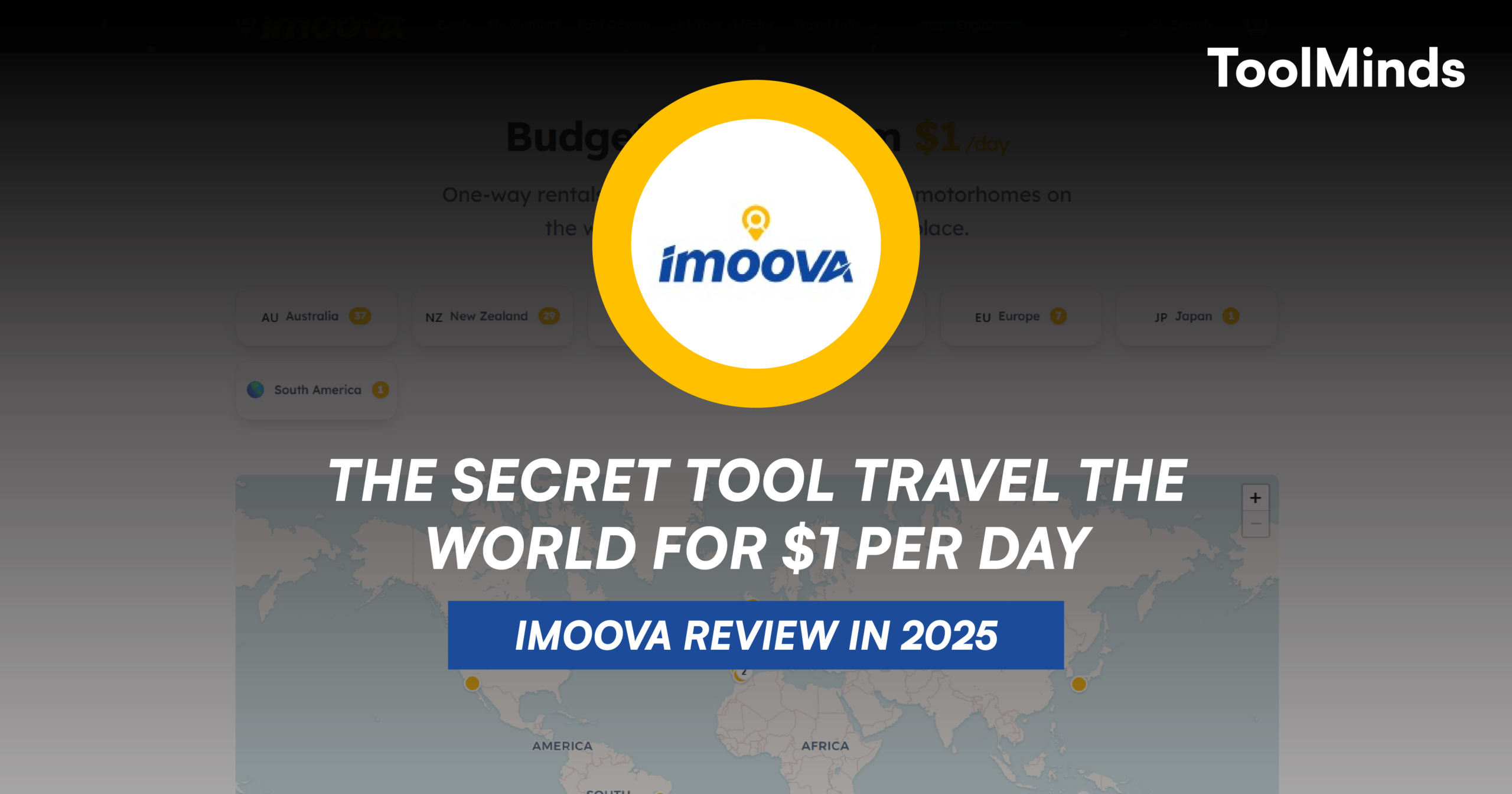When I first discovered EBL, I’ll admit I was a bit skeptical — how different could a battery or charger really be? But after spending several weeks with their gear — from everyday AA/AAA cells to a multi-bay smart charger — I found myself genuinely impressed. For anyone who’s tired of “just another battery” or frequently replacing chargers that don’t last, EBL felt like a breath of fresh air. In this review I’ll walk through five standout products from the EBL range, share my real-life experience, highlight what I loved and what I didn’t, and help you decide whether they’re a good fit for your setup.
EBL AA AAA Rechargeable Batteries Combo
My experience
I chose the EBL AA AAA Rechargeable Batteries Combo because I had several household devices — remote controls, wireless mice, kids’ toys — constantly needing new batteries. I replaced a box of single-use alkalines with this combo pack, and immediately noticed how many fewer “battery low” pop-ups I was seeing. The cells arrived charged, held their charge well when unused for a week, and when I used them in a wireless mouse they lasted noticeably longer than my previous generic rechargeable brand.
Pros
- Good value for money — you get both AA & AAA sizes in one pack.
- Ready-to-use out of the box (charged).
- Fewer battery changes needed → less waste and fewer interruptions.
- Suitable for everyday household devices.
Cons
- In very high-drain devices (e.g., a camera flash) they’re decent but not as long-lasting as the top premium “pro-series” batteries (though that’s fair given the price tier).
- You’ll still need a good charger to get optimal lifespan; the cells alone aren’t the full story.
Who it’s suitable for
If you have many AA/AAA devices around the house — remotes, kids’ toys, small electronics — and you’re looking to reduce recurring battery purchases, this combo is a strong choice. For professional/high-drain gear you might look into higher-capacity options, but for everyday use it’s very solid.
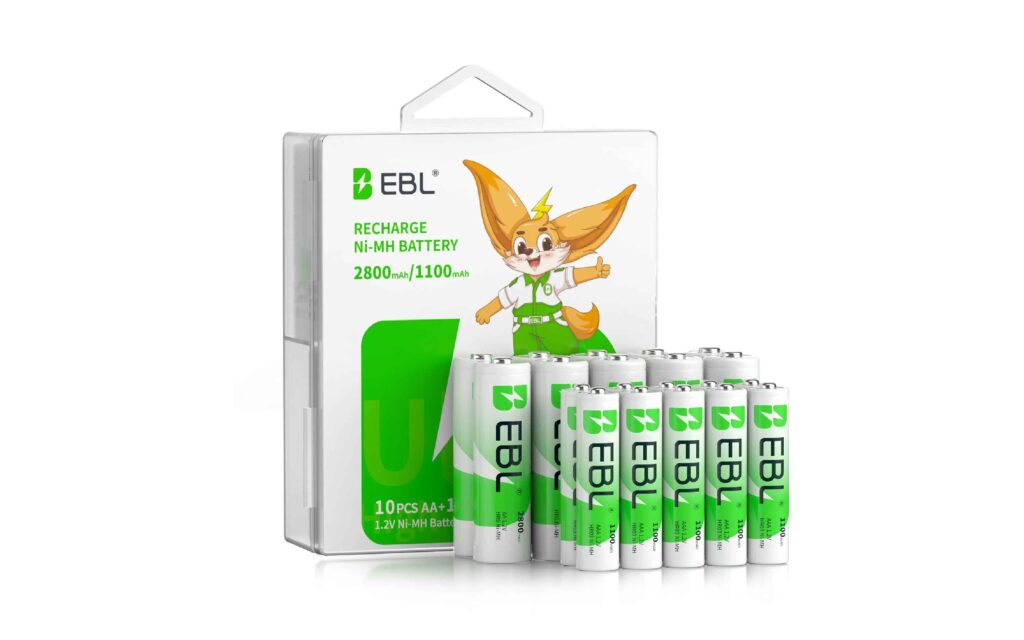
EBL 906 Smart Battery Charger (for C/D/AA/AAA/9V)
My experience
Next up I tried the EBL 906 Smart Battery Charger, which supports a wide range of battery types including AA, AAA, C, D and 9 V. I used it with the AA/AAA cells mentioned above and also some Ni-MH C-cells that I keep for emergency lighting. The LCD display clearly shows charging progress; the auto-cutoff and individual bay monitoring gives a reassuring “I know what’s happening” feeling. Over a few weeks of use, it didn’t overheat, and I appreciated the versatility.
Pros
- Supports many cell sizes — very flexible.
- LCD display gives clear information (time, status) so you’re not guessing.
- Auto-cutoff helps avoid overcharging which tends to shorten battery life.
- A good “future-proof” charger if you add different cell types in future.
Cons
- Takes up a little more space than simpler chargers (though not huge).
- Slightly pricier than basic chargers — but you’re paying for features.
Who it’s suitable for
This is ideal if you have a mix of battery sizes or you rotate devices with different battery types. If you only ever change AA/AAA and don’t mind a basic charger, you could consider simpler options, but if you value one charger that can handle it all, the 906 makes sense.
EBL 1.5 V Lithium AA AAA Rechargeable Batteries + Charger Bundle
My experience
I wanted to test something that could handle higher performance, so I grabbed the bundle of EBL 1.5 V Lithium AA/AAA rechargeable batteries (with accompanying charger). These promise a higher voltage (1.5 V vs standard 1.2 V when charged) which means better performance in some devices. I used them in a LED lantern and in a portable game controller. The difference was subtle but noticeable: the lantern maintained full brightness longer before dimming, and the controller didn’t drop battery as fast under heavy use. The accompanying charger was compact and efficient.
Pros
- Higher voltage means better performance in certain devices that expect 1.5 V cells.
- Good for devices where battery voltage drop is more noticeable.
- Bundled charger gives convenience and ensures compatibility.
Cons
- These are a higher cost compared to standard Ni-MH cells.
- For very low-drain devices the extra performance may not be “worth it”.
- Requires ensuring your charger is compatible (though the bundled one is).
Who it’s suitable for
Great for devices like high-power LED lights, digital cameras, portable game controllers, or any gear where battery performance matters. If you just need AA/AAA for remotes or clocks, you may not need to invest in the higher-spec bundle.
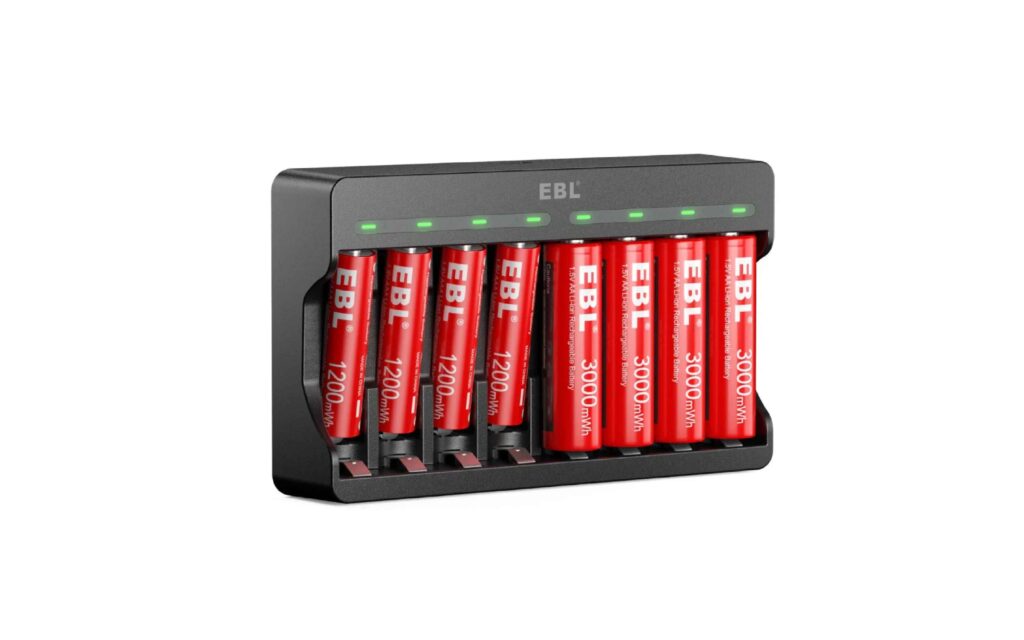
EBL 3700mAh AA Lithium Batteries 1.5 V Non-Rechargeable
My experience
Even though I favour rechargeables, I kept a supply of non-rechargeable lithium AA cells for “when I really couldn’t risk failure” — e.g., wireless security sensors, remote backups, or camping gear. EBL’s 3700mAh lithium AAs stood out because they claim very high capacity and stable voltage. On a weekend camping trip, I used one in a battery-powered floodlight and it ran strong for the entire evening and then some — without the usual dimming I’ve seen with cheaper alkalines.
Pros
- Excellent capacity and voltage stability → reliable in “mission-critical” use.
- Non-rechargeable means zero maintenance; set-and-forget.
- Long shelf-life and lower self-discharge than typical alkalines.
Cons
- Higher upfront cost than standard alkaline or cheap lithium cells.
- Because they’re non-rechargeable, they still create waste once used (though fewer changes).
- If used in very low drain devices, the benefit might not be as dramatic.
Who it’s suitable for
If you have devices that must keep working (security sensors, outdoor lighting, critical remotes, backup gear) and you don’t want to worry about swapping batteries, these are a wise pick. For general household devices you might stick with cheaper options.
EBL C9008 8-Bay LCD Universal Battery Charger (AA/AAA/C/D)
My experience
In setups where I had many different cell types (e.g., AA/AAA for remotes, C/D for older lamps, Ni-MH backups for tools) I needed a charger that could handle them all. The EBL C9008 8-bay LCD Universal Charger stepped in. I loaded it with a mix of AA, AAA, C and D cells and appreciated how each bay showed its own status. During charging it ran quietly, and after a full cycle I used the cells in different devices — all worked consistently.
Pros
- Supports many sizes in one unit → saves having multiple chargers.
- LCD display per bay means you can monitor progress individually.
- Good for households with varied battery-type gear.
Cons
- Because it supports many types, it’s larger/heavier than a simple charger.
- The more bays you fill, the longer the cycle may take if you’re waiting for “all done”.
- If you only use one size (e.g., AA), it might be overkill.
Who it’s suitable for
If you have an arsenal of devices with multiple battery sizes — e.g., older lamps (C/D), remotes (AA/AAA), portable radios (9 V) — then this charger offers flexibility and convenience. If you’re minimal and only ever swap AA/AAA, you might opt for a simpler unit.
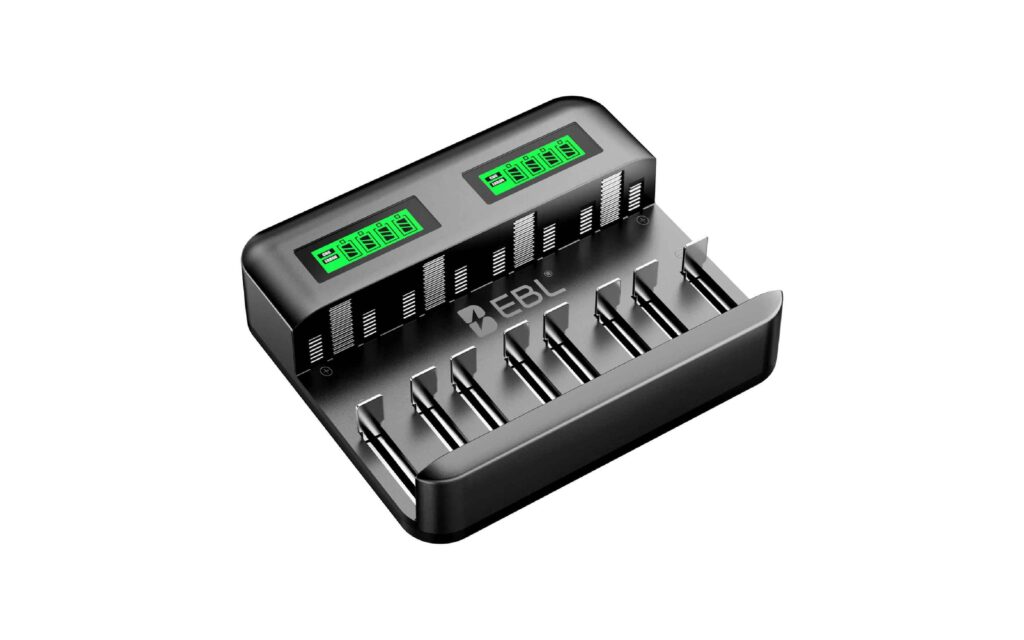
Conclusion
After spending time with these five EBL products, I come away feeling genuinely pleased. What stands out is the consistency of performance across the range — from basic AA/AAA rechargeables up to specialised lithium cells and universal chargers. While none of them are “perfect” (no product is), the trade-offs seem reasonable: you pay a little more in some cases for higher performance or versatility, and you get fewer frustrations, fewer replacements, and fewer mid-use failures.
If I were to offer a gentle recommendation: start with the AA/AAA Rechargeable Combo if you’re upgrading your everyday battery game. Then, if your setup demands more (higher voltage, varied sizes, mission-critical use), step up to the lithium bundle or multi-bay charger. In my view, EBL delivers solid value, genuine performance and a brand experience that doesn’t feel like oversold hype (supported by numerous positive customer reviews).
So, if em is looking to upgrade household batteries and chargers with fewer worries and more reliable performance, EBL is certainly worth a look. Just match the specific product to the devices and usage scenario and you should see the benefit.

